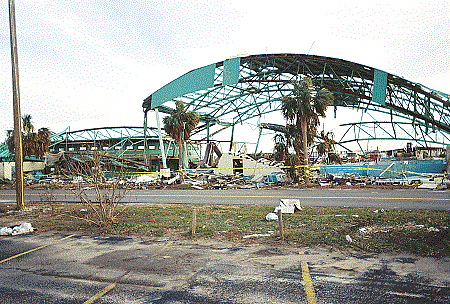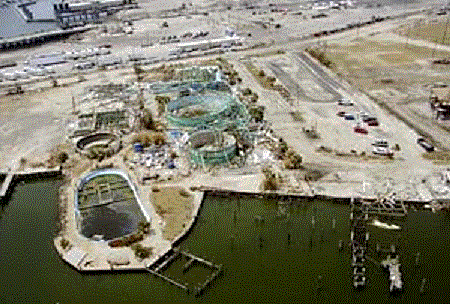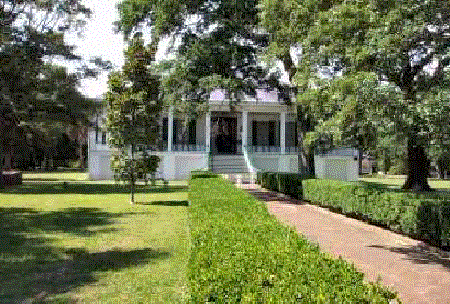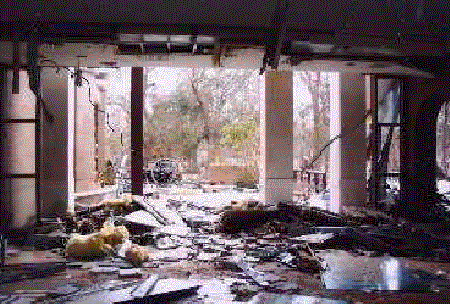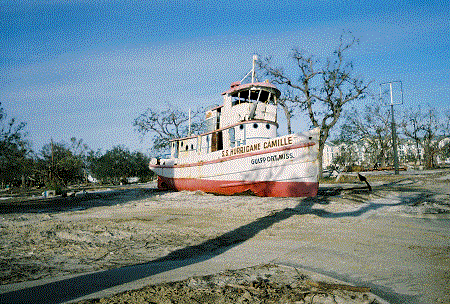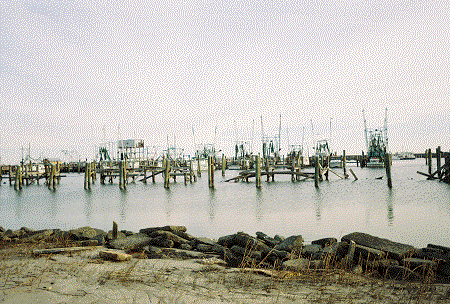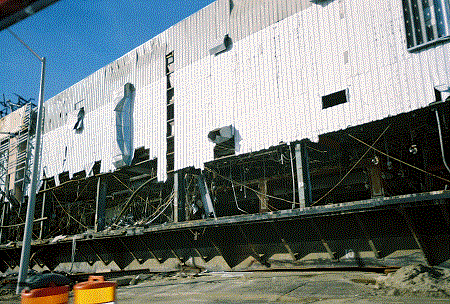The picture on the left is the
remains of the Main Building (center) and the Aqua Stadium (center
left) of the Marine Life Oceanarium in Gulfport after Hurricane
Katrina. The Dolphins' home, the Aqua Stadium, had been a 30-foot
high tank at Gulfport's nearly 50-year-old Marine Life Oceanarium,
which had survived Hurricane Camille in August of 1969 but was
destroyed by Hurricane Katrina in August of 2005. The Marine
Life Aqua Stadium and Main Building now stand in ruins after
Hurricane Katrina struck.The stadium had been the main venue
for viewing the facility's 14 Atlantic Bottlenose Dolphins in
action. The Oceanarium's buildings and tanks were almost completely
demolished by the storm. After Katrina, staff members evacuated
surviving Dolphins and Sea Lions to temporary homes at the Gulfarium
in Fort Walton Beach, Florida, and at Sea World in Orlando, Florida.
The picture on the right was taken
from the air after Katrina and shows the entire Marine Life Oceanarium
complex including Parking Lots, Main Building, Aqua Stadium,
Feeding Tanks, Holding Tanks, Storage Buildings, Supply Buildings,
and Docks.
A note about
water: It must be understood
that water weights about 60 pounds per cubic foot and has unusually
low compressibility. Imagine a nearly solid wall of water 30
feet deep, and 1,000 feet wide traveling at 20 miles per hour.
At 60 pounds per cubic foot, that would be tons of fast moving
water. Moving water can easily go around the sharp corners of
a building, but it "slams" straight into the flat walls
of any structure. Fast moving water can also go around the circular
trunk of a tree. Although small trees may not be able to withstand
the force of fast moving water, larger and stronger trees can.
That's why almost all of the larger trees on the Mississippi
Gulf Coast remained standing after Hurricane Camille in August
of 1969 and Hurricane Katrina in August of 2005. |
|
|
